Note: If you’re not after the theory, and just want the free downloadable PDF of the long exposure charts then you’ll find the link towards the bottom of the page.
In order to calculate the exposure time when using a specific type of neutral density filter, it’s also a good idea to have an understanding about how we label these ND filters. You might first want to take a look through my previous post: Understanding Neutral Density Filter Names and Numbers if you are unsure about that topic.
Long Exposure Photography Formulas
tND = t0 x 2ND
Where:
- ND = F-Stop reduction in light from filter
- tND = Final exposure time in seconds
- t0 = Correct exposure time without ND filter
In this simplified formula, we need to know the reduction in light that our filter gives us in f-stops. Sometimes that f-stop reduction isn’t mentioned on the filter, or even the packaging for the filter, and this is where we need to know how to convert a filter’s optical density number, into an f-stop. This mathematical process was covered extensively in my previous post about the naming of neutral density filters, but for simplicity, I’m also just going to include the conversion table below.
To understand this long exposure formula a little bit more, we need to remember the key definition that one f-stop is either a doubling, or a halving of a particular amount of light. An increase of one stop indicates a doubling of the light, and a decrease of one stop indicates a halving of the amount of light. If we use a 1-stop ND filter on a lens, it is reducing the light coming into the lens by one stop, in other words it is halving the light coming through it. A 2-stop ND filter reduces the light by 4 times (2×2) and a 3-stop filter reduces the light by 8 times (2x2x2), and so on. This can be expressed mathematically by what we call the “Filter Factor” which is what you see on the right-hand side of our long exposure formula: 2ND
Sometimes this Filter Factor number is actually displayed on the filter ring, or the filter case, usually expressed with the letters ND followed by a number. eg. ND8 or ND32. In this case you can just use the simplified long exposure formula:
tND = t0 x Filter Factor
Example
A 5-stop reduction in light would give us a filter factor of 25 = 2x2x2x2x2 = 32 , so an ND32 is also called a 5-stop neutral density filter. If your exposure was 1 second before applying the 5-stop ND filter, we can now see that your new exposure time is going to be 32 times longer, i.e. 32 seconds.
What About Calculating Exposure Time With Optical Density?
We can create a new variation on this equation for use with optical density (d) instead of f-stop. The optical density of a filter is probably the most common way for a filter to be labelled, so if you’ve ever seen a filter labelled as a 0.9 ND filter, the 0.9 is the optical density number of that filter. The table below will show you all the optical densities converted into f-stops if you’d prefer to think of them that way.
We know from my previous post about calculating optical density numbers, that d = log10Filter Factor
Using the inverse log process, this tells us that Filter Factor = 10d
Now we get the third way to express the new long exposure time by substituting that into our original equation to get:
tND = t0 x 10d
Where:
- d = Optical Density number of a filter (e.g 0.3, 0.9, 1.2 etc.)
- tND = Final exposure time in seconds
- t0 = Correct exposure time without ND filter
Example
Sticking with the numbers from the previous example, let’s look at a 1 second exposure with a 5-stop ND filter applied to it. Using the table below, we can see that a 5-stop filer has an optical density of 1.5. Plugging this into the new variation of our formula gives us tND = 1 x 101.5 = 31.6 seconds which we round to 32 seconds. The same answer as last time, as we expected. The variation in 31.6 vs exactly 32 seconds comes from the fact that actually, the optical density of a 5-stop filter is 1.50514997832 (from log10 25 ), but we round it down to 1.5 for simplicity when describing filters. If you ran the equation as tND = 1 x 101.50514997832 then you would get exactly 32 seconds without needing to round it up at the end.
Converting Optical Density Number Into F-Stop Reduction
As you can see from this table, it might get a bit confusing if you aren’t careful. A filter might have the number 4 on the side of it, and you could mistakenly think this this means it will provide a 4-stop reduction in light. In fact, it’s more likely this number is referring to optical density, which would mean that it would deliver a 13-stop reduction in light, and there’s always the curve ball that the manufacturer is quoting filter factor without using the “ND” prefix, in which case a 4 would mean a 2-stop reduction in light!
In reality, filter manufacturers these days usually use optical density, and if they are directly quoting differences in f-stops, then they will use the term “f-stop” quite clearly. The other reality is that a 2-stop ND filter and a 13-stop ND filter look very different to the eye. A 2-stop filter is still letting half the light through, so it’s relatively translucent. On the other hand, a 13-stop filter is only letting 0.012% of the light through, so it’s going to appear completely black and opaque.
If you don’t want to calculate the various varieties of names for filters, this table will give you all of the most commonly used ones:
| F-Stop Reduction | Optical Density | Filter Factor | % transmittance |
| 0 | 0 | 0 | 100 |
| 1 | 0.3 | 2 | 50 |
| 2 | 0.6 | 4 | 25 |
| 3 | 0.9 | 8 | 12.5 |
| 4 | 1.2 | 16 | 6.25 |
| 5 | 1.5 | 32 | 3.125 |
| 6 | 1.8 | 64 | 1.5625 |
| 7 | 2.1 | 128 | 0.78125 |
| 8 | 2.4 | 256 | 0.390625 |
| 9 | 2.7 | 512 | 0.1953125 |
| 10 | 3.0 | 1024 (sometimes called ND1000) | 0.09765625 |
| 11 | 3.3 | 2048 | 0.048828125 |
| 12 | 3.6 | 4096 | 0.0244140625 |
| 13 | 3.9 | 8192 | 0.01220703125 |
| 13 1/3 | 4.0 | 10000 | 0.01 |
| 14 | 4.2 | 16384 | 0.006103515625 |
| 15 | 4.5 | 32768 | 0.003051757813 |
| 16 | 4.8 | 65536 | 0.001525878906 |
| 16 2/3 | 5.0 | 100000 | 0.001 |
| 17 | 5.1 | 131072 | 0.0007629394531 |
| 18 | 5.4 | 262144 | 0.0003814697266 |
| 19 | 5.7 | 524288 | 0.0001907348633 |
| 20 | 6 | 1048576 | 0.00009536743164 |
Of course filter manufacturers could create neutral density filters with any amount of opacity they please, but they create them in these 1-stop increments so that we can easily calculate relative exposures.
Long Exposure Charts
IMPORTANT NOTE: To make these fit nicely on a web page, I’ve split them up a bit, so make sure you scroll down to find the ND filter you’re looking for. For all exposure values under and including 30 seconds, i.e. those which are selectable in camera without the use of bulb mode, I have rounded the results to use the standard set of available shutter speeds in modern cameras. Once we have gone over 30 seconds, I have left the results in hours, minutes and seconds. For larger values, this is in reality more accurate than is necessary because this would assume a perfect filter from the manufacturer. As filter factor increases, it becomes harder and harder for manufacturers to be precise about the filter’s optical density. When you couple this with changing ambient light over the period of your exposure, you really have to take longer exposure values as a starting point, and often make adjustments on the fly depending on weather and the specifics of your filter. Rounding the result to the nearest minute would be just fine. Also note that very obviously, some of these exposure times are ludicrous, but instead of leaving them out and having blank cells I thought I might as well keep them there. I highly doubt that any of you are going to make a 22 day long exposure, but I’d love someone to prove me wrong!
IMPORTANT NOTE #2: The reason that I decided to make these charts in the first place was that I could not find a satisfactory set available from anywhere else online. Yes, there are a few, but all of them are heavily simplified and either didn’t have the neutral density range I was looking for (up to 16-stops), or omitted many of the regularly selectable shutter speeds in order to make the tables more compact and easier on the eye. At least I presume that is their reasoning. I believe my set of long exposure tables to be much more complete, and I’m glad to offer them as a free download in PDF format as well.
1-stop ND to 5-stop ND
Indicated Shutter Speed |
1-stop |
2-stop |
3-stop |
4-stop |
5-stop |
| 1/8000 | 1/4000 | 1/2000 | 1/1000 | 1/500 | 1/250 |
| 1/6400 | 1/3200 | 1/1600 | 1/800 | 1/400 | 1/200 |
| 1/5000 | 1/2500 | 1/1250 | 1/640 | 1/320 | 1/160 |
| 1/4000 | 1/2000 | 1/1000 | 1/500 | 1/250 | 1/125 |
| 1/3200 | 1/1600 | 1/800 | 1/400 | 1/200 | 1/100 |
| 1/2500 | 1/1250 | 1/640 | 1/320 | 1/160 | 1/80 |
| 1/2000 | 1/1000 | 1/500 | 1/250 | 1/125 | 1/60 |
| 1/1600 | 1/800 | 1/400 | 1/200 | 1/100 | 1/50 |
| 1/1250 | 1/640 | 1/320 | 1/160 | 1/80 | 1/40 |
| 1/1000 | 1/500 | 1/250 | 1/125 | 1/60 | 1/30 |
| 1/800 | 1/400 | 1/200 | 1/100 | 1/50 | 1/25 |
| 1/640 | 1/320 | 1/160 | 1/80 | 1/40 | 1/20 |
| 1/500 | 1/250 | 1/125 | 1/60 | 1/30 | 1/15 |
| 1/400 | 1/200 | 1/100 | 1/50 | 1/25 | 1/13 |
| 1/320 | 1/160 | 1/80 | 1/40 | 1/20 | 1/10 |
| 1/250 | 1/125 | 1/60 | 1/30 | 1/15 | 1/8 |
| 1/200 | 1/100 | 1/50 | 1/25 | 1/13 | 1/6 |
| 1/160 | 1/80 | 1/40 | 1/20 | 1/10 | 1/5 |
| 1/125 | 1/60 | 1/30 | 1/15 | 1/8 | 1/4 |
| 1/100 | 1/50 | 1/25 | 1/13 | 1/6 | 0.3 |
| 1/80 | 1/40 | 1/20 | 1/10 | 1/5 | 0.4 |
| 1/60 | 1/30 | 1/15 | 1/8 | 1/4 | 0.5 |
| 1/50 | 1/25 | 1/13 | 1/6 | 0.3 | 0.6 |
| 1/40 | 1/20 | 1/10 | 1/5 | 0.4 | 0.8 |
| 1/30 | 1/15 | 1/8 | 1/4 | 0.5 | 1 |
| 1/25 | 1/13 | 1/6 | 0.3 | 0.6 | 1.3 |
| 1/20 | 1/10 | 1/5 | 0.4 | 0.8 | 1.6 |
| 1/15 | 1/8 | 1/4 | 0.5 | 1 | 2 |
| 1/13 | 1/6 | 0.3 | 0.6 | 1.3 | 2.5 |
| 1/10 | 1/5 | 0.4 | 0.8 | 1.6 | 3.2 |
| 1/8 | 1/4 | 0.5 | 1 | 2 | 4 |
| 1/6 | 0.3 | 0.6 | 1.3 | 2.5 | 5 |
| 1/5 | 0.4 | 0.8 | 1.6 | 3.2 | 6 |
| 1/4 | 0.5 | 1 | 2 | 4 | 8 |
| 0.3 | 0.6 | 1.3 | 2.5 | 5 | 10 |
| 0.4 | 0.8 | 1.6 | 3.2 | 6 | 13 |
| 0.5 | 1 | 2 | 4 | 8 | 15 |
| 0.6 | 1.3 | 2.5 | 5 | 10 | 20 |
| 0.8 | 1.6 | 3.2 | 6 | 13 | 25 |
| 1 | 2 | 4 | 8 | 15 | 30 |
| 1.3 | 2.5 | 5 | 10 | 20 | 42 |
| 1.6 | 3.2 | 6 | 13 | 25 | 51 |
| 2 | 4 | 8 | 15 | 30 | 1m 4s |
| 2.5 | 5 | 10 | 20 | 40 | 1m 20s |
| 3.2 | 6 | 13 | 25 | 51 | 1m 42s |
| 4 | 8 | 15 | 30 | 1m 4s | 2m 8s |
| 5 | 10 | 20 | 40 | 1m 20s | 2m 40s |
| 6 | 13 | 25 | 48 | 1m 36s | 3m 12s |
| 8 | 15 | 30 | 1m 4s | 2m 8s | 4m 16s |
| 10 | 20 | 40 | 1m 20s | 2m 40s | 5m 20s |
| 13 | 25 | 52 | 1m 44s | 3m 28s | 6m 56s |
| 15 | 30 | 1m | 2m | 4m | 8m |
| 20 | 40 | 1m 20s | 2m 40s | 5m 20s | 10m 40s |
| 25 | 50 | 1m 40s | 3m 20s | 6m 40s | 13m 20s |
| 30 | 1m | 2m | 4m | 8m | 16m |
Indicated Shutter Speed |
1-stop |
2-stop |
3-stop |
4-stop |
5-stop |
6-stop ND to 10-stop ND
Indicated Shutter Speed |
6-stop |
7-stop |
8-stop |
9-stop |
10-stop |
| 1/8000 | 1/125 | 1/60 | 1/30 | 1/15 | 1/8 |
| 1/6400 | 1/100 | 1/50 | 1/25 | 1/13 | 1/6 |
| 1/5000 | 1/80 | 1/40 | 1/20 | 1/10 | 1/5 |
| 1/4000 | 1/60 | 1/30 | 1/15 | 1/8 | 1/4 |
| 1/3200 | 1/50 | 1/25 | 1/13 | 1/6 | 0.3 |
| 1/2500 | 1/40 | 1/20 | 1/10 | 1/5 | 0.4 |
| 1/2000 | 1/30 | 1/15 | 1/8 | 1/4 | 0.5 |
| 1/1600 | 1/25 | 1/13 | 1/6 | 0.3 | 0.6 |
| 1/1250 | 1/20 | 1/10 | 1/5 | 0.4 | 0.8 |
| 1/1000 | 1/15 | 1/8 | 1/4 | 0.5 | 1 |
| 1/800 | 1/13 | 1/6 | 0.3 | 0.6 | 1.3 |
| 1/640 | 1/10 | 1/5 | 0.4 | 0.8 | 1.6 |
| 1/500 | 1/8 | 1/4 | 0.5 | 1 | 2 |
| 1/400 | 1/6 | 0.3 | 0.6 | 1.3 | 2.5 |
| 1/320 | 1/5 | 0.4 | 0.8 | 1.6 | 3.2 |
| 1/250 | 1/4 | 0.5 | 1 | 2 | 4 |
| 1/200 | 0.3 | 0.6 | 1.3 | 2.5 | 5 |
| 1/160 | 0.4 | 0.8 | 1.6 | 3.2 | 6 |
| 1/125 | 0.5 | 1 | 2 | 4 | 8 |
| 1/100 | 0.6 | 1.3 | 2.5 | 5 | 10 |
| 1/80 | 0.8 | 1.6 | 3.2 | 6 | 13 |
| 1/60 | 1 | 2 | 4 | 8 | 15 |
| 1/50 | 1.3 | 2.5 | 5 | 10 | 20 |
| 1/40 | 1.6 | 3.2 | 6 | 13 | 25 |
| 1/30 | 2 | 4 | 8 | 15 | 30 |
| 1/25 | 2.5 | 5 | 10 | 20 | 41 |
| 1/20 | 3.2 | 6 | 13 | 25 | 51 |
| 1/15 | 4 | 8 | 15 | 30 | 1m 8s |
| 1/13 | 5 | 10 | 20 | 39 | 1m 19s |
| 1/10 | 6 | 13 | 25 | 51 | 1m 42s |
| 1/8 | 8 | 15 | 30 | 1m 4s | 2m 8s |
| 1/6 | 10 | 20 | 43 | 1m 25s | 2m 51s |
| 1/5 | 13 | 25 | 51 | 1m 42s | 3m 25s |
| 1/4 | 15 | 30 | 1m 4s | 2m 8s | 4m 16s |
| 0.3 | 20 | 38 | 1m 17s | 1m 34s | 5m 7s |
| 0.4 | 25 | 51 | 1m 42s | 3m 25s | 6m 50s |
| 0.5 | 30 | 1m 4s | 2m 8s | 4m 16s | 8m 32s |
| 0.6 | 38 | 1m 17s | 1m 34s | 5m 7s | 10m 14s |
| 0.8 | 51 | 1m 42s | 3m 25s | 6m 50s | 13m 39s |
| 1s | 1m 4s | 2m 8s | 4m 16s | 8m 32s | 17m 4s |
| 1.3s | 1m 23s | 2m 46s | 5m 32s | 11m 6s | 22m 11s |
| 1.6s | 1m 42s | 3m 25s | 6m 50s | 13m 39s | 27m 18s |
| 2s | 2m 8s | 4m 16s | 8m 32s | 17m 4s | 34m 8s |
| 2.5s | 2m 40s | 5m 20s | 10m 40s | 21m 20s | 42m 40s |
| 3.2s | 3m 25s | 6m 50s | 13m 39s | 27m 18s | 54m 37s |
| 4s | 4m 16s | 8m 32s | 17m 4s | 34m 8s | 1h 8m 16s |
| 5s | 5m 20s | 10m 40s | 21m 20s | 42m 40s | 1h 25m 20s |
| 6s | 6m 22s | 12m 48s | 25m 36s | 51m 12s | 1h 42m 24s |
| 8s | 8m 32s | 17m 4s | 34m 8s | 1h 8m 16s | 2h 16m 32s |
| 10s | 10m 40s | 21m 20s | 42m 40s | 1h 25m 20s | 2h 50m 40s |
| 13s | 13m 52s | 27m 44s | 55m 28s | 1h 50m 56s | 3h 41m 52s |
| 15s | 16m | 32m | 1h 4m | 2h 8m | 4h 16m |
| 20s | 21m 20s | 42m 40s | 1h 25m 20s | 2h 50m 40s | 5h 41m 20s |
| 25s | 26m 40s | 53m 20s | 1h 46m 40s | 3h 33m 20s | 7h 6m 20s |
| 30s | 32m | 1h 4m | 2h 8m | 4h 16m | 8h 32m |
Indicated Shutter Speed |
6-stop |
7-stop |
8-stop |
9-stop |
10-stop |
11-stop ND to 16-stop ND
Indicated Shutter Speed |
11-stop |
12-stop |
13-stop |
14-stop |
15-stop |
16-stop |
| 1/8000 | 1/4 | 0.5 | 1 | 2 | 4 | 8 |
| 1/6400 | 0.3 | 0.6 | 1.3 | 2.5 | 5 | 10 |
| 1/5000 | 0.4 | 0.8 | 1.6 | 3.2 | 6 | 13 |
| 1/4000 | 0.5 | 1 | 2 | 4 | 8 | 15 |
| 1/3200 | 0.6 | 1.3 | 2.5 | 5 | 10 | 20 |
| 1/2500 | 0.8 | 1.6 | 3.2 | 6 | 13 | 25 |
| 1/2000 | 1 | 2 | 4 | 8 | 15 | 30 |
| 1/1600 | 1.3 | 2.5 | 5 | 10 | 20 | 41 |
| 1/1250 | 1.6 | 3.2 | 6 | 13 | 25 | 52 |
| 1/1000 | 2 | 4 | 8 | 15 | 30 | 1m 6s |
| 1/800 | 2.5 | 5 | 10 | 20 | 41 | 1m 22s |
| 1/640 | 3.2 | 6 | 13 | 25 | 51 | 1m 42s |
| 1/500 | 4 | 8 | 15 | 30 | 1m 6s | 2m 11s |
| 1/400 | 5 | 10 | 20 | 41 | 1m 22s | 2m 44s |
| 1/320 | 6 | 13 | 25 | 51 | 1m 42s | 3m 25s |
| 1/250 | 8 | 15 | 30 | 1m 6s | 2m 11s | 4m 22s |
| 1/200 | 10 | 20 | 41 | 1m 22s | 2m 44s | 5m 28s |
| 1/160 | 13 | 25 | 51 | 1m 42s | 3m 25s | 6m 50s |
| 1/125 | 15 | 30 | 1m 6s | 2m 11s | 4m 22s | 8m 44s |
| 1/100 | 20 | 41 | 1m 22s | 2m 44s | 5m 28s | 10m 55s |
| 1/80 | 25 | 51 | 1m 42s | 3m 25s | 6m 50s | 13m 39s |
| 1/60 | 30 | 1m 8s | 2m 17s | 4m 33s | 9m 6s | 18m 12s |
| 1/50 | 41 | 1m 22s | 2m 44s | 5m 28s | 10m 55s | 21m 51s |
| 1/40 | 51 | 1m 42s | 3m 25s | 6m 50s | 13m 39s | 27m 18s |
| 1/30 | 1m 8s | 2m 17s | 4m 33s | 9m 6s | 18m 12s | 36m 25s |
| 1/25 | 1m 22s | 2m 44s | 5m 28s | 10m 55s | 21m 51s | 43m 41s |
| 1/20 | 1m 42s | 3m 25s | 6m 50s | 13m 39s | 27m 18s | 54m 37s |
| 1/15 | 2m 17s | 4m 33s | 9m 6s | 18m 12s | 36m 25s | 1h 12m 49s |
| 1/13 | 2m 38s | 5m 15s | 10m 30s | 21m | 42m 1s | 1h 24m 1s |
| 1/10 | 3m 25s | 6m 50s | 13m 39s | 27m 18s | 54m 37s | 1h 49m 14s |
| 1/8 | 4m 16s | 8m 32s | 17m 4s | 34m 8s | 1h 8m 16s | 2h 16m 32s |
| 1/6 | 5m 41s | 11m 23s | 22m 45s | 45m 31s | 1h 31m 1s | 3h 2m 3s |
| 1/5 | 6m 50s | 13m 39s | 27m 18s | 54m 37s | 1h 49m 14s | 3h 38m 27s |
| 1/4 | 8m 32s | 17m 4s | 34m 8s | 1h 8m 16s | 2h 16m 32s | 4h 33m 4s |
| 0.3 | 10m 14s | 20m 29s | 40m 58s | 1h 21m 55s | 2h 43m 50s | 5h 27m 41s |
| 0.4 | 13m 39s | 27m 18s | 54m 37s | 1h 49m 14s | 3h 38m 27s | 7h 16m 54s |
| 0.5 | 17m 4s | 34m 8s | 1h 8m 16s | 2h 16m 32s | 4h 33m 4s | 9h 6m 8s |
| 0.6 | 20m 29s | 40m 58s | 1h 21m 55s | 2h 43m 50s | 5h 27m 41s | 10h 55m 22s |
| 0.8 | 27m 18s | 54m 37s | 1h 49m 14s | 3h 38m 27s | 7h 16m 54s | 14h 33m 49s |
| 1s | 34m 8s | 1h 8m 16s | 2h 16m 32s | 4h 33m 4s | 9h 6m 8s | 18h 12m 16s |
| 1.3s | 44m 22s | 1h 28m 45s | 2h 57m 30s | 5h 54m 59s | 11h 49m 58s | 23h 39m 57s |
| 1.6s | 54m 37s | 1h 49m 14s | 3h 38m 27s | 7h 16m 54s | 14h 33m 49s | 29h 7m 38s |
| 2s | 1h 8m 16s | 2h 16m 32s | 4h 33m 4s | 9h 6m 8s | 18h 12m 16s | 36h 24m 32s |
| 2.5s | 1h 25m 20s | 2h 50m 40s | 5h 41m 20s | 11h 22m 40s | 22h 45m 20s | 45h 30m 40s |
| 3.2s | 1h 49m 14s | 3h 38m 27s | 7h 16m 54s | 14h 33m 49s | 29h 7m 38s | 58h 15m 16s |
| 4s | 2h 16m 32s | 4h 33m 4s | 9h 6m 8s | 18h 12m 16s | 36h 24m 32s | 72h 49m 4s |
| 5s | 2h 50m 40s | 5h 41m 20s | 11h 22m 40s | 22h 45m 20s | 45h 30m 40s | 91h 1m 20s |
| 6s | 3h 24m 48s | 6h 49m 36s | 13h 39m 12s | 27h 18m 24s | 54h 36m 48s | 109h 13m 36s |
| 8s | 4h 33m 4s | 9h 6m 8s | 18h 12m 16s | 36h 24m 32s | 72h 49m 4s | 145h 38m 8s |
| 10s | 5h 41m 20s | 11h 22m 40s | 22h 45m 20s | 45h 30m 40s | 91h 1m 20s | 182h 2m 40s |
| 13s | 7h 23m 44s | 14h 47m 28s | 29h 34m 56s | 59h 9m 52s | 118h 19m 44s | 236h 39m 28s |
| 15s | 8h 32m | 17h 4m | 34h 8m | 68h 16m | 136h 32m | 273h 4m |
| 20s | 11h 22m 40s | 22h 45m 20s | 45h 30m 40s | 91h 1m 20s | 182h 2m 40s | 364h 5m 20s |
| 25s | 14h 13m 20s | 28h 26m 40s | 56h 53m 20s | 113h 46m 40s | 227h 33m 20s | 455h 6m 40s |
| 30s | 17h 4m | 34h 8m | 68h 16m | 136h 32m | 273h 4m | 546h 8m |
Indicated Shutter Speed |
11-stop |
12-stop |
13-stop |
14-stop |
15-stop |
16-stop |
Are You Stacking Filters Together?
A frequently asked question in the realm of long exposure photography is “what happens when I stack fitlers together?”
Thankfully the answer is very simple; You simply add the f-stop values of each filter together to get the final resulting reduction in f-stops. If you stack a 6-stop filter and a 4-2top filter then you’ll have the equivalent of a 10-stop filter. Be warned though, the more filters you stack together, the more vignetting you’ll get in the corners of your image. Always use the minimum number of ND filters to achieve your goal. If you have a 2-stop, 3-stop, 4-stop, 5-stop and a 6-stop filter, don’t stack the 2,3 and 5 to get to 10! Just use the 4 and the 6.
Let’s Do an Example
You are setting up a beautiful landscape shot and you’d like to capture the swirling movement of the clouds by using a much longer exposure than is natively possible with your lens. You set your camera up on a tripod, and expose the scene correctly without an ND filter in place.
Your chosen exposure is f/11, ISO100, 0.3 seconds
You have a filter in your bag that says 3.0 on the side of the filter ring. Consulting the first conversion table on the page, we can see that this is a 10-stop ND filter, which should work very well for this purpose.
If you want to use the formula, it would be tND = 0.3 x 210 = 307.2 seconds = 5 minutes and 7 seconds.
If you want to use the log exposure chart, simply find the row in the first column that’s labelled 0.3, and then follow it over to the column that’s labelled 10-stops.
FREE Download – Long Exposure Chart PDF
Lots of people rely on mobile apps these days to help them calculate their long exposure values, but this can be problematic in cold weather which can often cause mobile device batteries to shut down prematurely. For this reason, I always recommend that you have a printed long exposure chart tucked away somewhere in your camera bag. This free downloadable long exposure chart PDF is split up into several sections so that you can print the ones that are relevant to you and your selection of ND filters. You can either choose to have the full table with all ND values, or choose pages that only show specific, common ND filter sets used by many landscape photographers.


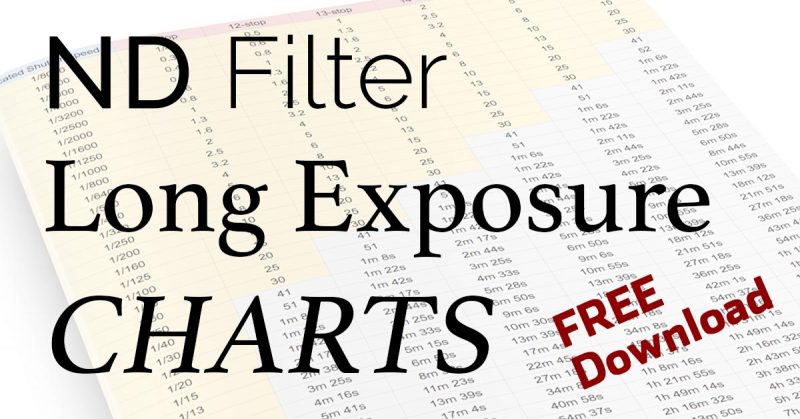



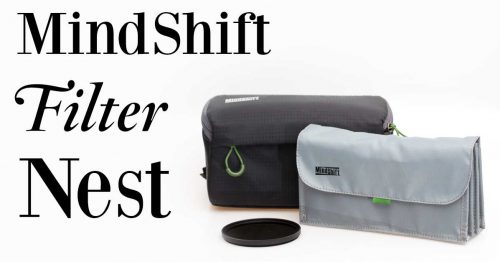
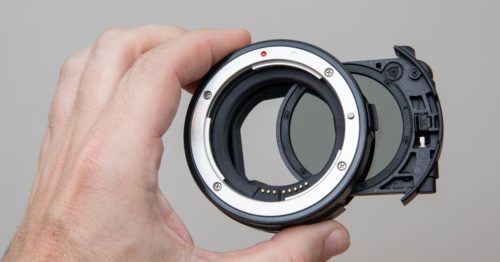
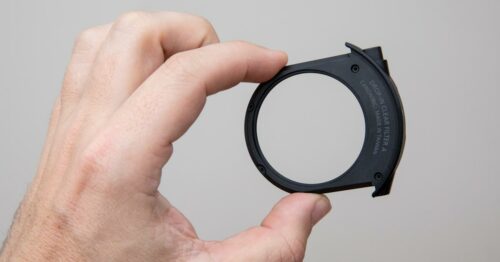
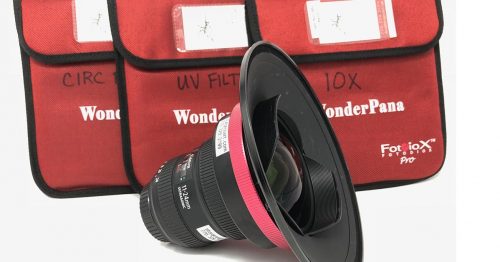

I signed my name and e mail for the free PDF ND filter calculating chart and it keeps looping me back to entering my name and e mail. Think this might me a leader to get your e mail.
Hey John! Sorry you had some trouble with our system. I looked into it and it all seems to have worked from our end. It shows that you were sent the email containing the download link for the chart which you opened at 14:29 and then clicked the download link very shortly after that. If you’re having ongoing issues, please reply again and I’ll get right on it, but I think it’s all sorted judging by what I see from this end. Best, Dan.
same problem as John
Sending you an email Paul… It turns out that John didn’t actually have a problem.
Thank you very much for sharing your knowledge.
Your are welcome!
Hi,
Same problem as the others. Typed in my email details and it tells me an email has been sent. But have received nothing.
Thanks, John.
I checked our system and it seems as though the email was sent and that you downloaded the PDF. I’m guessing you posted this comment before the email arrived… sometimes it takes a few minutes depending on your email provider etc.
I agree with you
Hi Dan,
I clicked on the free download part of the sentence, but no window showed up to fill in my email address.
Thanks for letting me know, Larry. I have fixed the link.
Hi Dan,
It still doesn’t work 🙁
Larry
Do you have some sort of adblocker or popup blocker turned on?
Hi again, I turned off ads blocker and disabled security software on my computer. I got a pop up window to enter my name for Cecilia Leather Camera bag, but not long exposure charts to download?
Weird. I can’t explain what is going on there. I keep testing it on my end and it works fine.
Here’s a backup method. Go here: https://app.monstercampaigns.com/c/b2eus6b2jokpnobypm9e/
Press the “Yes Please” green button.
Green button seems to be not responsive after pressing it. Nothing happens.
Sorry Larry, I’m out of ideas. That backup form isn’t even running on my site, it’s hosted on the website of the company that runs my email system. So the fact that you have issues with it there, as well as on my site, suggests it’s an issue on your computer. It all works fine for me.
You could try another browser, or clear your browser cache and try again. Other than that I’m out of ideas. Sorry.